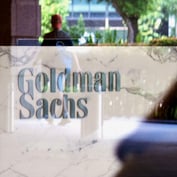Separate accounts are a useful tool in managing client assets, but they have been oversold by many firms. It’s important to know exactly what a separate account is, what happens behind the scenes, and who should–and shouldn’t–use separate accounts.
A separate account is a brokerage account titled in the name of the client. The client directly owns the individual securities held in the account. Clients will sign a limited power of attorney that allows the investment manager to buy and sell securities in their account on their behalf. It does not allow them to transfer money out of the account or commingle their clients’ assets with other accounts. The domicile firm will deduct fees for both the manager and itself directly out of the account unless instructed otherwise.
Because it’s your client’s account, the client will receive confirmations in the mail for every trade. If your manager owns a lot of securities or has high turnover, clients will receive a lot of confirmations in the mail. A major benefit of separate accounts for clients is knowing in “almost-real time” what is happening in their accounts, compared to owning the average mutual fund, which will typically disclose its holdings only on an annual or semiannual basis.
Everyone knows that some investment management firms manage hundreds of thousands of separate accounts. However, every account doesn’t receive individual attention from the portfolio manager. Each account is matched to a model, and variances are eliminated by buying or selling securities for blocks of accounts with similar variances. Portfolio managers are usually focused on security selection and the performance of the product as a whole. The investment professional at a money management firm who has the most direct contact with an individual account is a trader.
The Trader’s Role
The trader’s job is usually twofold: to get the best execution for each trade, and to minimize dispersion. Best execution refers to a trade or series of trades that optimizes the trader’s objective, which is not always solely to obtain a best price. Since a trader or traders at the same firm will often execute trades in the same security for multiple products, minimizing market impact is also important. Some firms focus on the time element as well–the timing cost relates to potential returns lost due to slow trade implementation.
For example, a portfolio manager might want to buy ABCD, a moderately liquid mid-cap OTC stock, into a number of the products he is responsible for. The first step is to inform the trading desk at his firm. In the best of all possible worlds, share counts are generated for every account, including any mutual funds, and then blocked together to form a single order. This order is worked by the trading desk. In the event that the entire position could not be purchased, it is typical for the shares bought to be prorated across all accounts. Whether or not the entire order is filled, every account receives the same price for its portion of the order.
Often, orders must be directed to certain firms for certain accounts. This occurs at either the client’s discretion or because the domicile firm requires all trades be done through its own trading desk. For this reason, multiple orders need to be created–one for each separate firm which has directed brokerage, and then the aggregated block that represents the remaining accounts that have no restrictions. Unless otherwise disclosed in the manager’s Form ADV, it is usual for the order of these trades to be randomly determined and then executed. Each block of accounts receives a different price. It is not always an advantage to be the first to buy or sell, especially with extremely liquid securities. The differences in purchase price create dispersion among the different groups of accounts.
There is no benefit to deliberately directing brokerage in order to be placed in a different group, or to be given your own spot in the random rotation. Most often the large block receives the best execution because it is usually “worked” by the trading desk. By “working” an order, the desk is giving the trade its full attention and the benefits of its skill. If a small account is directed, then it is usually routed to the relevant exchange to be executed at the market.
Traders also seek to reduce dispersion among like accounts. “Dispersion” refers to the variance in return among accounts in the same investment style. All accounts of a single style are aggregated together to calculate a composite return for a specified period of time (usually quarterly and annual performance). Certain accounts can be excluded from the composite due to large cash flows, inception date, or client-directed restrictions. Few accounts will achieve the exact return of the composite, but usually most are very close. Dispersion measures the grouping of returns around the composite return. “High” dispersion refers to the fact that several accounts have returns that are materially different from the composite return.
Dispersion can be caused by many different events, including directed brokerage, the client requesting tax selling or account restrictions, time of opening, or time of cash flows into or out of an account. From the client’s perspective, dispersion is not necessarily bad–in theory, the account is just as likely to outperform the composite as to underperform it.
Managers want to minimize dispersion for a variety of reasons, primarily because it eliminates the question “Why did account A do better than account B?” Managers would prefer to avoid being asked this question, whether by the client, the financial consultant, or by the SEC’s auditors. Each brokerage firm has teams of people who evaluate managers, and one of the criteria is dispersion. If dispersion is high, then a manager might not be able to establish new relationships with other brokerage firms, or may lose business at a current brokerage firm client.








 May 01, 2005 at 04:00 AM
May 01, 2005 at 04:00 AM










